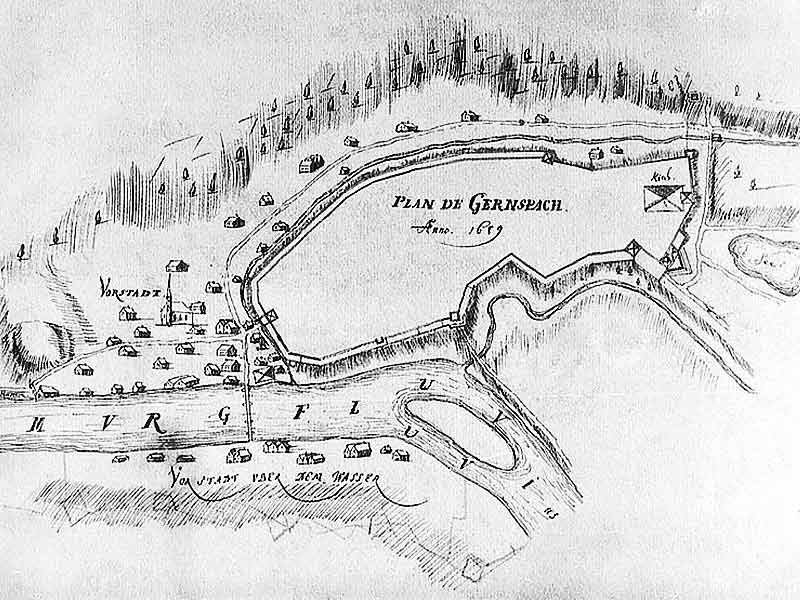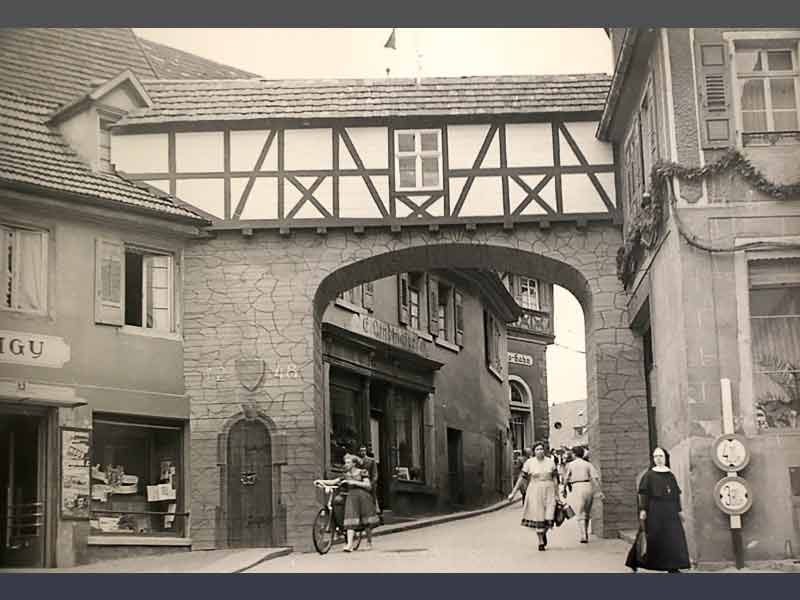Unteres Tor
Der Hauptzugang in die Stadt Gernsbach erfolgte vor 1800 über Stadtbrücke und Hofstätte durch das Untere Tor, Ende des 18. Jahrhunderts auch Rastatter Tor genannt. Die 2017 angebrachte Pflastermarkierung verdeutlicht die ehemalige Lage des Tors.
Seine Existenz ist seit 1441 indirekt belegt. Das Tor selbst wird 1577, der unmittelbar auf das Tor aufgesetzte Untere Turm erstmals 1579 ausdrücklich erwähnt. Ein befestigter Zugang in die Stadt an dieser Stelle bestand allerdings sicherlich schon seit den Anfängen der Stadtbefestigung im 13. Jahrhundert. Zusätzlichen Schutz bot ein Schlagbaum an der Hofstätte und eine Brücke, die vor dem Tor über den Waldbach verlief.
Der Turm diente auch als Uhrenturm und als Gefängnis. Zum Tode Verurteilte erhielten hier ihre Henkersmahlzeit. Neben dem Tor befand sich das Wächterhaus der Torknechte. Während des Pfälzischen Erbfolgekriegs wurden Tor und Turm 1691 durch Brand stark beschädigt, so dass 1696 die Abtragung des Turms in Erwägung gezogen wurde. Tatsächlich abgebrochen wurden Tor und Turm bald nach 1800. Anlässlich der 700-Jahr-Feier der Stadt Gernsbach wurde 1953 eine temporäre Nachbildung errichtet, die das ehemalige Bauwerk in freier Form interpretierte. Eine authentische Abbildung existiert nicht.
 Mobile
Mobile









